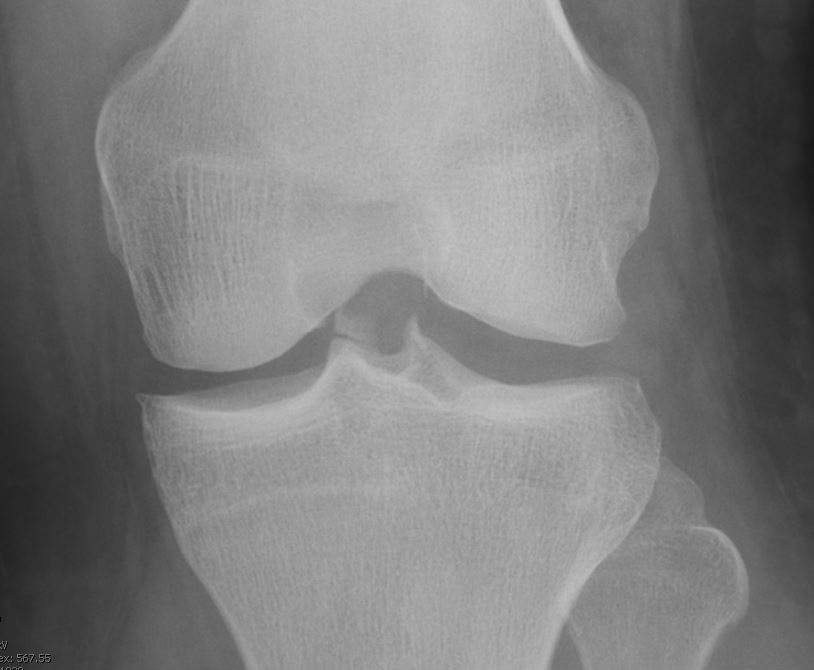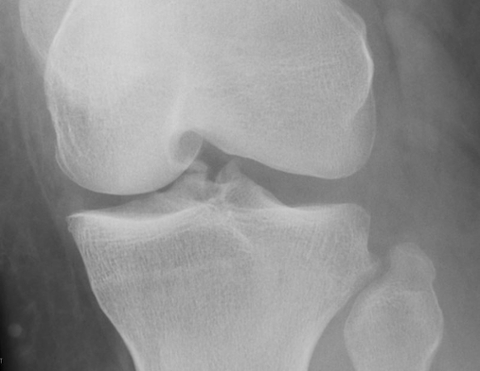Leg/Knee Case 11 Diagnosis
Medial Tibial Eminence (Spine) Fracture

AP and lateral plain films are usually sufficient to detect these fractures, and the lateral view is often helpful in determining displacement and comminution.
CT should be obtained if displacement cannot be determined on x-ray alone. CT is particularly helpful and often indicated in the ED in pediatric patients with suspected tibial eminence fractures. This is because pediatric tibial eminence fractures are often larger than they appear on x-ray and contain cartilaginous components. MRI can be reserved for the outpatient setting and is almost always required due to the concurrent injuries.
The Modified Meyers and McKeever Classification System is used to further characterize tibial eminence fractures. They include:
- Type I: Nondisplaced (<3mm)
- Type II: Minimally displaced with intact posterior hinge
- Type III: Completely displaced
- Type IV: Completely displaced with rotation
- Type V: Completely displaced, rotated, comminuted
